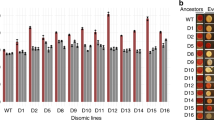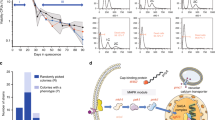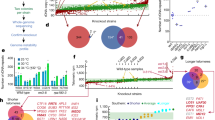Abstract
Mutation rate balances the need to protect genome integrity with the advantage of evolutionary innovations. Microorganisms increase their mutation rate when stressed, perhaps addressing the growing need for evolutionary innovation. Such a strategy, however, is only beneficial under moderate stresses that allow cells to divide and realize their mutagenic potential. In contrast, severe stresses rapidly kill the majority of the population with the exception of a small minority of cells that are in a phenotypically distinct state termed persistence. Although persisters were discovered many decades ago, the stochastic event triggering persistence is poorly understood. We report that spontaneous DNA damage triggers persistence in Saccharomyces cerevisiae by activating the general stress response, providing protection against a range of harsh stress and drug environments. We further show that the persister subpopulation carries an increased load of genetic variants in the form of insertions, deletions or large structural variations, which are unrelated to their stress survival. This coupling of DNA damage to phenotypic persistence may increase genetic diversity specifically in severe stress conditions, where diversity is beneficial but the ability to generate de novo mutations is limited.
This is a preview of subscription content, access via your institution
Access options
Access Nature and 54 other Nature Portfolio journals
Get Nature+, our best-value online-access subscription
$29.99 / 30 days
cancel any time
Subscribe to this journal
Receive 12 digital issues and online access to articles
$119.00 per year
only $9.92 per issue
Buy this article
- Purchase on Springer Link
- Instant access to full article PDF
Prices may be subject to local taxes which are calculated during checkout





Similar content being viewed by others
References
Bigger, J. Treatment of staphylococcal infections with penicillin by intermittent sterilisation. Lancet 244, 497–500 (1944).
Maisonneuve, E. & Gerdes, K. Molecular mechanisms underlying bacterial persisters. Cell 157, 539–548 (2014).
Lewis, K. Persister cells. Annu. Rev. Microbiol. 64, 357–372 (2010).
Dhar, N. & McKinney, J. D. Microbial phenotypic heterogeneity and antibiotic tolerance. Curr. Opin. Microbiol. 10, 30–38 (2007).
Gefen, O. & Balaban, N. Q. The importance of being persistent: heterogeneity of bacterial populations under antibiotic stress. FEMS Microbiol. Rev. 33, 704–717 (2009).
Jayaraman, R. Bacterial persistence: some new insights into an old phenomenon. J. Biosci. 33, 795–805 (2008).
Balaban, N. Q., Merrin, J., Chait, R., Kowalik, L. & Leibler, S. Bacterial persistence as a phenotypic switch. Science 305, 1622–1625 (2004).
Balaban, N. Q. Persistence: mechanisms for triggering and enhancing phenotypic variability. Curr. Opin. Genet. Dev. 21, 768–775 (2011).
Allison, K. R., Brynildsen, M. P. & Collins, J. J. Heterogeneous bacterial persisters and engineering approaches to eliminate them. Curr. Opin. Microbiol. 14, 593–598 (2011).
Nathan, C. Fresh approaches to anti-infective therapies. Sci. Trans. Med. 4, 140sr142 (2012).
Lewis, K. Persister cells, dormancy and infectious disease. Nat. Rev. Microbiol. 5, 48–56 (2007).
Glickman, M. S. & Sawyers, C. L. Converting cancer therapies into cures: lessons from infectious diseases. Cell 148, 1089–1098 (2012).
Knoechel, B. et al. An epigenetic mechanism of resistance to targeted therapy in T cell acute lymphoblastic leukemia. Nat. Genet. 46, 364–370 (2014).
Welch, A. Z., Gibney, P. A., Botstein, D. & Koshland, D. E. TOR and RAS pathways regulate desiccation tolerance in Saccharomyces cerevisiae . Mol. Biol. Cell 24, 115–128 (2013).
Levy, S. F., Ziv, N. & Siegal, M. L. Bet hedging in yeast by heterogeneous, age-correlated expression of a stress protectant. PLoS Biol. 10, e1001325 (2012).
Stewart-Ornstein, J., Weissman, J. S. & El-Samad, H. Cellular noise regulons underlie fluctuations in Saccharomyces cerevisiae . Mol. Cell 45, 483–493 (2012).
Gasch, A. P. et al. Genomic expression programs in the response of yeast cells to environmental changes. Mol. Biol. Cell 11, 4241–4257 (2000).
Weinert, T. & Hartwell, L. Control of G2 delay by the RAD9 gene of Saccharomyces cerevisiae . J. Cell Sci. Suppl. 12, 145–148 (1989).
Weinert, T. A. & Hartwell, L. H. The RAD9 gene controls the cell cycle response to DNA damage in Saccharomyces cerevisiae . Science 241, 317–322 (1988).
Lisby, M., Rothstein, R. & Mortensen, U. H. Rad52 forms DNA repair and recombination centers during S phase. Proc. Natl Acad. Sci. USA 98, 8276–8282 (2001).
Lisby, M., Mortensen, U. H. & Rothstein, R. Colocalization of multiple DNA double-strand breaks at a single Rad52 repair centre. Nat. Cell Biol. 5, 572–577 (2003).
Domkin, V., Thelander, L. & Chabes, A. Yeast DNA damage-inducible Rnr3 has a very low catalytic activity strongly stimulated after the formation of a cross-talking Rnr1/Rnr3 complex. J. Biol. Chem. 277, 18574–18578 (2002).
Hendry, J. A., Tan, G., Ou, J., Boone, C. & Brown, G. W. Leveraging DNA damage response signaling to identify yeast genes controlling genome stability. G3 5, 997–1006 (2015).
Berry, D. B. & Gasch, A. P. Stress-activated genomic expression changes serve a preparative role for impending stress in yeast. Mol. Biol. Cell 19, 4580–4587 (2008).
Lynch, M. et al. A genome-wide view of the spectrum of spontaneous mutations in yeast. Proc. Natl Acad. Sci. USA 105, 9272–9277 (2008).
Nishant, K. T. et al. The baker’s yeast diploid genome is remarkably stable in vegetative growth and meiosis. PLoS Genet. 6, e1001109 (2010).
Serero, A., Jubin, C., Loeillet, S., Legoix-Ne, P. & Nicolas, A. G. Mutational landscape of yeast mutator strains. Proc. Natl Acad. Sci. USA 111, 1897–1902 (2014).
Huh, W. K. et al. Global analysis of protein localization in budding yeast. Nature 425, 686–691 (2003).
Janke, C. et al. A versatile toolbox for PCR-based tagging of yeast genes: new fluorescent proteins, more markers and promoter substitution cassettes. Yeast 21, 947–962 (2004).
Lee, S. E. et al. Saccharomyces Ku70, mre11/rad50 and RPA proteins regulate adaptation to G2/M arrest after DNA damage. Cell 94, 399–409 (1998).
Blecher-Gonen, R. et al. High-throughput chromatin immunoprecipitation for genome-wide mapping of in vivo protein-DNA interactions and epigenomic states. Nat. Protoc. 8, 539–554 (2013).
Martin, M. Cutadapt removes adapter sequences from high-throughput sequencing reads. EMBnet J. 1, 10–12 (2011).
Li, H. Aligning sequence reads, clone sequences and assembly contigs with BWA-MEM. Preprint at http://arXiv.org/abs/1303.3997v2 (2013).
Cherry, J. M. et al. Saccharomyces Genome Database: the genomics resource of budding yeast. Nucleic Acids Res. 40, D700–D705 (2012).
McKenna, A. et al. The Genome Analysis Toolkit: a MapReduce framework for analyzing next-generation DNA sequencing data. Genome Res. 20, 1297–1303 (2010).
DePristo, M. A. et al. A framework for variation discovery and genotyping using next-generation DNA sequencing data. Nat. Genet. 43, 491–498 (2011).
Lawrence, M. et al. Software for computing and annotating genomic ranges. PLoS Computat. Biol. 9, e1003118 (2013).
Obenchain, V. et al. VariantAnnotation: a Bioconductor package for exploration and annotation of genetic variants. Bioinformatics 30, 2076–2078 (2014).
Garrison, E. & Marth, G. Haplotype-based variant detection from short-read sequencing. Preprint at http://arXiv.org/abs/1207.3907 (2012).
Ye, K., Schulz, M. H., Long, Q., Apweiler, R. & Ning, Z. Pindel: a pattern growth approach to detect break points of large deletions and medium sized insertions from paired-end short reads. Bioinformatics 25, 2865–2871 (2009).
Layer, R. M., Chiang, C., Quinlan, A. R. & Hall, I. M. LUMPY: a probabilistic framework for structural variant discovery. Genome Biol. 15, R84 (2014).
Faust, G. G. & Hall, I. M. SAMBLASTER: fast duplicate marking and structural variant read extraction. Bioinformatics 30, 2503–2505 (2014).
Boeva, V. et al. Control-FREEC: a tool for assessing copy number and allelic content using next-generation sequencing data. Bioinformatics 28, 423–425 (2012).
Boeva, V. et al. Control-free calling of copy number alterations in deep-sequencing data using GC-content normalization. Bioinformatics 27, 268–269 (2011).
Li, H. et al. The Sequence Alignment/Map format and SAMtools. Bioinformatics 25, 2078–2079 (2009).
Koren, A., Soifer, I. & Barkai, N. MRC1-dependent scaling of the budding yeast DNA replication timing program. Genome Res. 20, 781–790 (2010).
Acknowledgements
We thank our group members for discussions and comments. We thank the Weizmann Institute of Science Flow Cytometry unit for support and O. Golani for help with the cell segmentation macro. This work was supported by the Minerva Center, European Research Council and the Israel Science Foundation. K.B. was supported by the European Molecular Biology Organization long-term fellowship.
Author information
Authors and Affiliations
Contributions
All authors designed the study and analysed the results. G.Y., D.L. and J.S. performed the experiments; K.B. analysed the whole genome sequencing data. N.B., G.Y., D.L. and K.B. wrote the manuscript.
Corresponding authors
Ethics declarations
Competing interests
The authors declare no competing financial interests.
Supplementary information
Supplementary Information
Supplementary figures 1–8, Supplementary note on variant calling. (PDF 14154 kb)
Supplementary Video 1
DNA damage precedes Hsp12 induction. (AVI 616 kb)
Supplementary Video 2
Emergence of drug-tolerant, DANN-damage-induced extreme cells in an unperturbed population A. (AVI 1644 kb)
Supplementary Video 3
Emergence of drug-tolerant, DANN-damage-induced extreme cells in an unperturbed population B. (AVI 5424 kb)
Supplementary Video 4
Emergence of drug-tolerant, DANN-damage-induced extreme cells in an unperturbed population C. (AVI 4773 kb)
Supplementary Video 5
HO-induced DSBs trigger persistence A. (AVI 502 kb)
Supplementary Video 6
HO-induced DSBs trigger persistence B. (AVI 1188 kb)
Rights and permissions
About this article
Cite this article
Yaakov, G., Lerner, D., Bentele, K. et al. Coupling phenotypic persistence to DNA damage increases genetic diversity in severe stress. Nat Ecol Evol 1, 0016 (2017). https://doi.org/10.1038/s41559-016-0016
Received:
Accepted:
Published:
DOI: https://doi.org/10.1038/s41559-016-0016
This article is cited by
-
Intron-mediated induction of phenotypic heterogeneity
Nature (2022)
-
Role of Mitochondria in Generation of Phenotypic Heterogeneity in Yeast
Journal of the Indian Institute of Science (2020)
-
Bacterial persistence promotes the evolution of antibiotic resistance by increasing survival and mutation rates
The ISME Journal (2019)
-
Microbial ageing and longevity
Nature Reviews Microbiology (2019)



